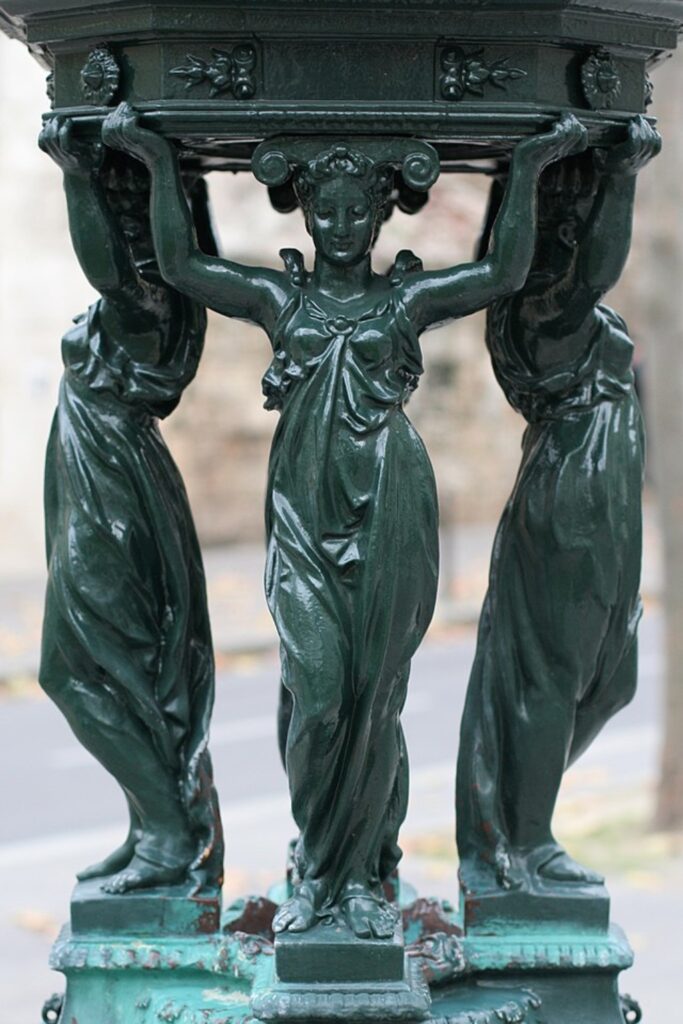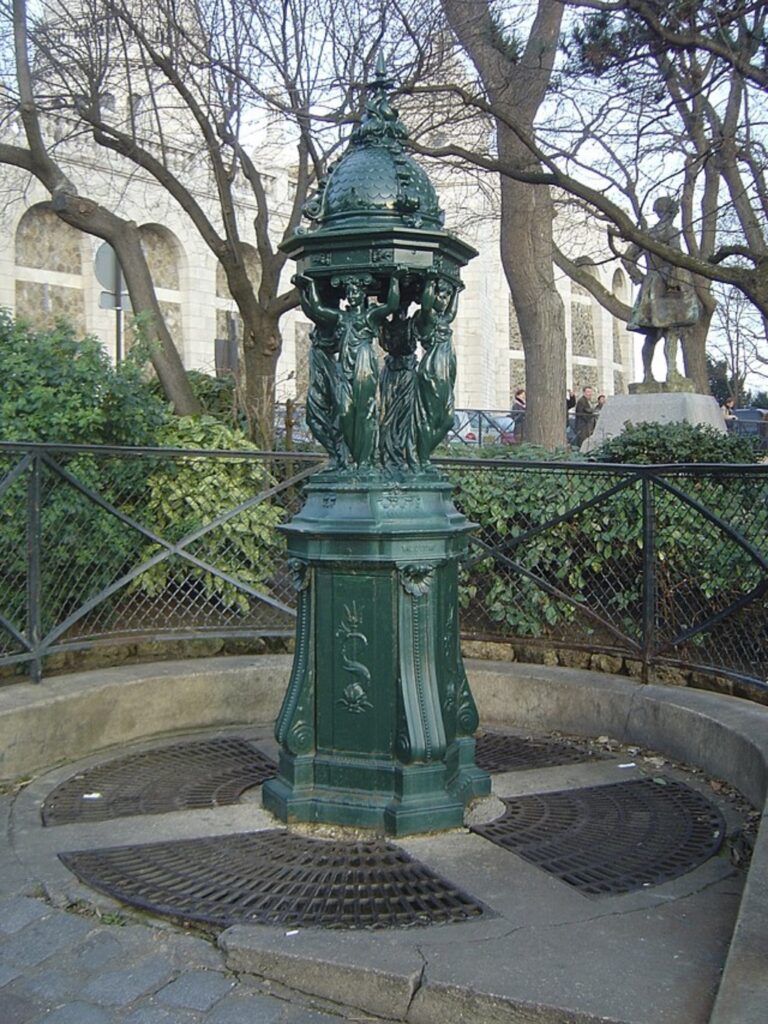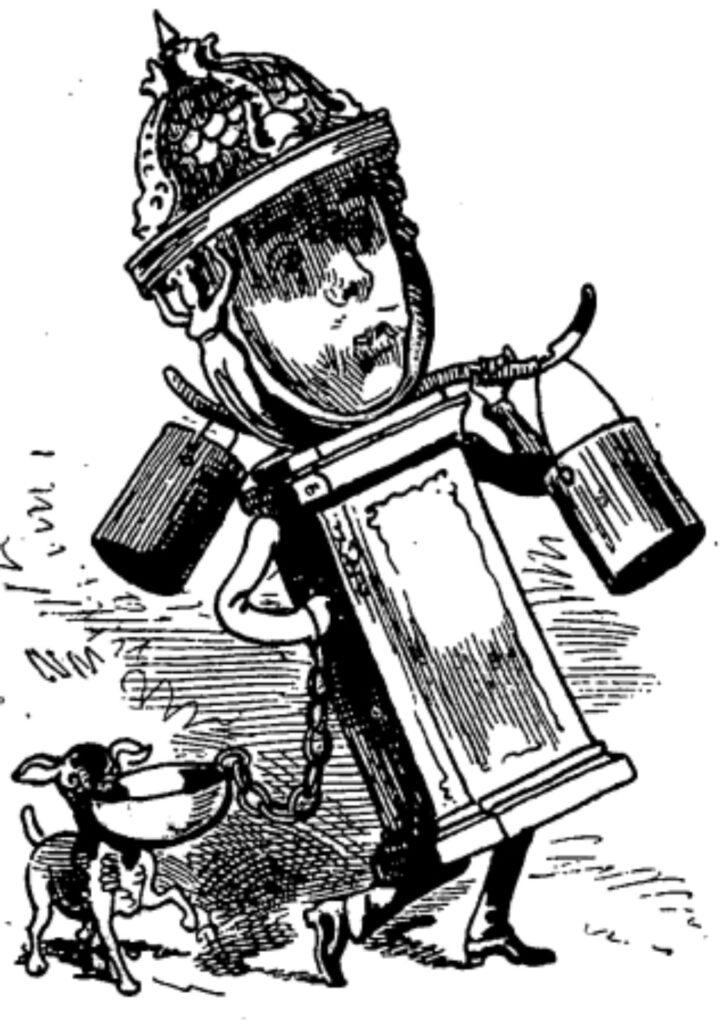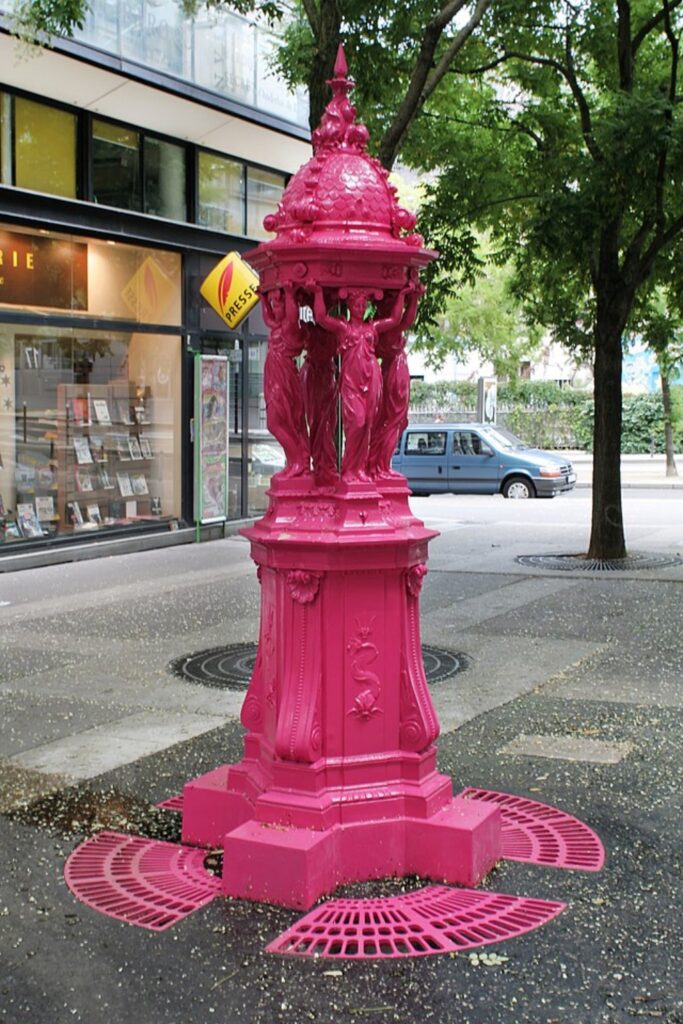
Wallace Fountains are among those elegant touches on Paris’s urban landscape that visitors marvel at and photograph without really knowing what they are or how they got there.
In fact, they are perfectly functional public drinking fountains that combine practicality and beauty. Today, 107 of them still adorn the city’s streets. This weekend, September 24-25, Paris is celebrating the 150th anniversary of the installation of the first Wallace Fountain in the city (see below for more information).

Where did they come from? They were the generous gift of a 19th-century philanthropist named Sir Richard Wallace, who was born in 1818 in Britain, where he is best known for his extraordinary art collection, which was donated to the British people in 1897 and now forms the heart of the Wallace Collection in London.
A Francophile who lived a good part of his life at the Château de Bagatelle in the Bois de Boulogne, Wallace came to be known as “The Benefactor of Paris,” especially for providing food, fuel and housing to fight the famine, cold and suffering caused by the siege of the capital during the Franco-Prussian War (1870-71).

After the war, Wallace gave Parisians his greatest and most lasting gift: clean drinking water for all provided by the lovely green fountains. He died at the Château de Bagatelle in 1890 and is buried in Père Lachaise Cemetery.
With their shapely contours, these iconic, eye-pleasing fountains feature four caryatids, allegorical figures representing the virtues of simplicity, kindness, charity and sobriety. They gracefully and effortlessly hold up the fountain’s dome, from which potable water streams down. The basin is elevated to keep thirsty dogs from profiting from the running water or taking a cool bath.
The fountains were originally equipped with drinking cups on chains, but they were removed in 1952 for health reasons. Charles-Auguste Lebourg designed the cast-iron sculptures, following Sir Wallace’s precise instructions as to size, materials and cost – he wanted them to be affordable enough for dozens to be installed.

They were painted the same dark green as Paris’s news kiosks, a color chosen by Napoleon III to blend with the city’s parks and tree-lined streets. Today, a handful have been painted other colors: yellow, blue, red and even pink – shocking!
For everything you need to know about the fountains, visit the site of the Society of the Wallace Fountains. Click here for the full calendar of this weekend’s events, some of which are listed below:
Sept. 23-25: visit the garden and several rooms of Chateau de Bagatelle, Sir Richard Wallace’s Paris home, which is undergoing restoration after being closed to the public for several years.
Sept. 22-23: The Carnavalet Museum, which has a Wallace Fountain in its garden, will host four half-day conferences on Sir Richard Wallace and philanthropy; Wallace Fountains as functional works of art; the history of the Paris water supply; and urban redevelopment related to hygiene.
Sept. 24-25: An exhibition, “The 150 Years of the Wallace Fountains,” will be held in the Champs Élysées Gardens, along with walking tours, games and other activities.
Sept. 24-Oct. 9: Inspired by the fountains, modern designs by students of the École Boulle will be on show at Paris Rendez-Vous (29, rue de Rivoli, 75004).
Sept. 24: The French Federation of Hiking will lead a 9-kilometer walk, beginning at 9:30 on Place de la Concorde. Shorter walks (5 to 6 kilometers) are planned in October. In addition, 22 self-guided walks are available online.
Favorite
I remember the latest photo I took of a Wallace fountain was in Marché Couvert Saint-Quentin on my way back to Gare du Nord during my walking return from Les Halles, via rue St-Denis and onto rue du Faubourg Saint-Denis.
Thank you for this reminder of the fresh water fountains. I understand there are also some recent carbonated water ones. It’s sad that not all tour leaders know about them, perhaps very few, and so many visitors have no idea.
Great story. I love it. Those fountains have always been a pleasure to see.
terrific edition. thanks!
Thank you!